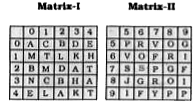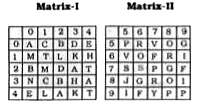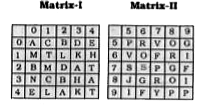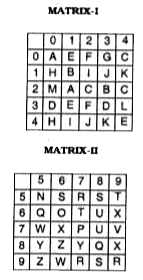Fill in the blanks :
Penis is an external intromittent organ which contains 3 colums of spongy tissue : two colunmss of . .. . . . . On the front side and one column of . . . . .. . Around the urethra .
The correct Answer is:Corpora cavernosa , corpus spongiosum
Step by step video, text & image solution for Fill in the blanks : Penis is an external intromittent organ which contains 3 colums of spongy tissue : two colunmss of . .. . . . . On the front side and one column of . . . . .. . Around the urethra . by Biology experts to help you in doubts & scoring excellent marks in Class 11 exams.
Topper's Solved these Questions
- BOOK - PRADEEPCHAPTER - HUMAN REPRODUCTION EXERCISE - ADDITIONAL QUESTIONS (LONG ANSWER QUESTIONS)70videos
HUMAN REPRODUCTION
- BOOK - PRADEEPCHAPTER - HUMAN REPRODUCTION EXERCISE - ANALYTICAL QUESTIONS WITH ANSWERS19videos
HUMAN REPRODUCTION
- BOOK - PRADEEPCHAPTER - HUMAN REPRODUCTION EXERCISE - ADDITIONAL QUESTIONS ( VERY SHORT ANSWER QUESTIONS)40videos
HUMAN REPRODUCTION
- BOOK - PRADEEPCHAPTER - EXCRETORY PRODUCTS AND THEIR ELIMINATIONEXERCISE - Curiosity Questions7videos
EXCRETORY PRODUCTS AND THEIR ELIMINATION
- BOOK - PRADEEPCHAPTER - LOCOMOTION AND MOVEMENTSEXERCISE - NOTABLE QUESTIONS2videos
LOCOMOTION AND MOVEMENTS
Similar Questions
The liquid connective tissue A circulates in our body continuously without stopping. This tissue contains a pigment B which imparts it a colour C. The tissue A consists of four components D, E, F and G. The component D fights infection and protects us from diseases. The component E helps in the clotting of tissue A if a person gets a cut. The component F is a liquid which consists mainly of water with many substances dissolved in it and component G carries oxygen from the lungs to all the parts of the body.
(a) What is (i) tissue A (ii) pigment B, and (iii) colour C ?
(b) Name (i) D (ii) E (iii) F, and (iv) G.
(c) Name one substance (other than oxygen) which is transported by tissue A in the human body
(d) Which two components of tissue A are the cell without nucleus ?
(e) Name any two organism (animals) which do not have liquid like A in their body.View SolutionHere each question contains statements given in two column which have to be matched. Statements in columns I are labelled as A, B, C and D where as the statements in column II are labelled p, q, r and s. The answers to these questions are to be appropriately bubbled as illustrated in the following example.
If the correct matches should like the following.

Column IColumn II(A)H3PO3Δ−−→(p) One of the products acts as reducing agent(B)PCl3+h2OΔ−−→(q) One of the products is trbasci, non reducing(C) NO+H_(2)Oto,(r)Dehydration),((D)HNO3+P4O10→(s) in one of the products central atom has +5 oxidation stateView Solution
Knowledge Check
- Question 1 - Select One
Fill in the blanks:
...2.. provides energy and organic materials for growth and repair of tissues.Â
Each tooth is embedded in a socket of J aw bone. This type of attachment is called ...b...
An adult human has 32 permanent teeth which are of four different types. This is called ....C...dentition.
Majority of mammals including human being forms two sets of teeth during their life. This type of dentition is called ....d.. .Aa-food, b-heterodont, d-diphyodont, cthecodont aBa-vitamins, a-heterodont, e-diphyodont, dthecodont aCa-food, c-heterodont, d-diphyodont, b-thecodontDa-food, c-heterodont, b-diphyodont, d - Question 2 - Select One
Fill in the blanks:
1. ATP synthase consists of two major components, Fo and F1. The .... a... headpiece is peripheral membrane protein complex and contains the site for synthesis of ATP from ADP and inorganic phosphate.
2. ... b... is an integral membrane protein complex that forms the channel through which proton crosses the membrane.
3. For each ATP produced, .... c .... passes through .... b.... from the .... d.... to the .... e.... down the electrochemical proton gradient.Aa−F0,b−F1,c−3H+, d-matrix, c-inner membraneBa−F1,b−F0,c−2H+, d-intermembrane space, e-matrixCa−F0,b−F1,c−2H+, d-intermembrane space, e-matrixDa−F1,b−F0,c−2H+, d-matrix,e-intermembrane space - Question 3 - Select One
Fill in the blanks:
a. Zygote divides to form ….1…. which is implanted to uterus.
b. The structure which provides vascular connection between foetus and uterus is called …2…
c. Inner cell mass contains certain cells called …3…. which have the potency to give rise to all the tissues and organs.
d. By the end of ...4...., most of the major organ systems are formed, for example, the limbs and external genital organs are well-developed.
e. Immediately after implantation, the ...5...defferentiates into an outer layer called ectoderm and an inner layer called endoderm.A1-morula, 2-umbilical cord, 3-trophoblast, 4-second trimester, 5-stem cellsB1-blastocyst, 2-placenta, 3-stem cells, 4-first trimester, 5-trophoblastC1-blastocyst, 2-umbilical cord, 3-stem cells, 4-seond trimesters, 5-inner cell massD1-blastocyst, 2-placenta, 3-stem cells, 4-first trimester, 5-inner cell mass.
Given below are two Matrices of Twenty-five cells, each containing two classes of alphabets. The columns and rows of Matrix I are numbered from 0 to 4 and that of Matrix II from 5 to 9. A letter from these matrices can be represented first by its row number and the next by its column number. In each of the following questions. identify one set of number pairs out of (1), (2), (3) and (4) which represents the given word.

FELTView SolutionGiven below are two Matrices of Twenty-five cells, each containing two classes of alphabets. The columns and rows of Matrix I are numbered from 0 to 4 and that of Matrix II from 5 to 9. A letter from these matrices can be represented first by its row number and the next by its column number. In each of the following questions. identify one set of number pairs out of (1), (2), (3) and (4) which represents the given word.

POSTView SolutionGiven below are two Matrices of Twenty-five cells, each containing two classes of alphabets. The columns and rows of Matrix I are numbered from 0 to 4 and that of Matrix II from 5 to 9. A letter from these matrices can be represented first by its row number and the next by its column number. In each of the following questions. identify one set of number pairs out of (1), (2), (3) and (4) which represents the given word.

MAGIView SolutionGiven below are two Matrices of Twenty-five cells, each containing two classes of alphabets. The columns and rows of Matrix I are numbered from 0 to 4 and that of Matrix II from 5 to 9. A letter from these matrices can be represented first by its row number and the next by its column number. In each of the following questions. identify one set of number pairs out of (1), (2), (3) and (4) which represents the given word.

DONYView SolutionGiven below are two Matrices of Twenty-five Cells, each containing two classes of alphabets. The columns and rows of Matrix 1 are numbered from O to 4 and that of Matrix U from 5 to 9. A letter from these matrices can be represented first by its row number and next by Its column number. In each of the following questions, Identify one set of number pairs out of (1), (2), (3) and (4) which represents the given word.

CROWView Solution

